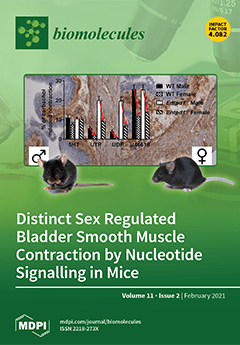The major intrinsic protein (MIP) superfamily is a key part of the fungal transmembrane transport network. It facilitates the transport of water and low molecular weight solutes across biomembranes. The fungal uncharacterized X-Intrinsic Protein (XIP) subfamily includes the full protein diversity of MIP. Their biological functions still remain fully hypothetical. The aim of this study is still to deepen the diversity and the structure of the XIP subfamily in light of the MIP counterparts—the aquaporins (AQPs) and aquaglyceroporins (AQGPs)—and to describe for the first time their function in the development, biomass accumulation, and mycoparasitic aptitudes of the fungal bioagent
Trichoderma atroviride. The fungus-XIP clade, with one member (
TriatXIP), is one of the three clades of MIPs that make up the diversity of
T. atroviride MIPs, along with the AQPs (three members) and the AQGPs (three members).
TriatXIP resembles those of strict aquaporins, predicting water diffusion and possibly other small polar solutes due to particularly wider ar/R constriction with a Lysine substitution at the LE2 position. The XIP loss of function in ∆
TriatXIP mutants slightly delays biomass accumulation but does not impact mycoparasitic activities. ∆
TriatMIP forms colonies similar to wild type; however, the hyphae are slightly thinner and colonies produce rare chlamydospores in PDA and specific media, most of which are relatively small and exhibit abnormal morphologies. To better understand the molecular causes of these deviant phenotypes, a wide-metabolic survey of the ∆
TriatXIPs demonstrates that the delayed growth kinetic, correlated to a decrease in respiration rate, is caused by perturbations in the pentose phosphate pathway. Furthermore, the null expression of the
XIP gene strongly impacts the expression of four expressed
MIP-encoding genes of
T. atroviride, a plausible compensating effect which safeguards the physiological integrity and life cycle of the fungus. This paper offers an overview of the fungal XIP family in the biocontrol agent
T. atroviride which will be useful for further functional analysis of this particular MIP subfamily in vegetative growth and the environmental stress response in fungi. Ultimately, these findings have implications for the ecophysiology of
Trichoderma spp. in natural, agronomic, and industrial systems.
Full article






